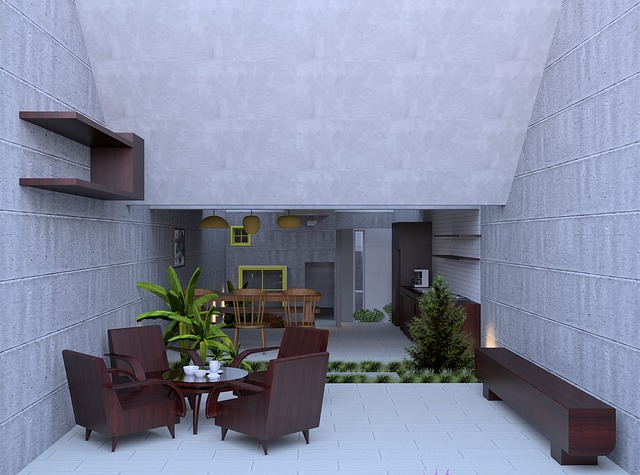CAD-based architectural visualization revolutionizes client experiences in architecture by transforming design presentations into immersive 3D interactions. This technology bridges concept to realization, enhancing communication, creative problem-solving, and ultimately delivering personalized, complex project solutions through real-time 3D exploration. The future focuses on blending digital and physical spaces for collaborative, data-driven design adjustments.
In today’s digital era, real-time 3D visualization is transforming client experiences, offering unprecedented levels of immersion and interaction. This article explores the power of CAD-based architectural visualization in creating compelling, immersive environments. We delve into its advantages, from enhancing client engagement to enabling precise design communication. Additionally, we discuss the future of real-time 3D technology and its potential to revolutionize how architects present and interact with their designs.
CAD-based Visualization: The Immersive Advantage
CAD-based architectural visualization offers a significant advantage in real-time 3D experiences, bridging the gap between design and client engagement. This technology allows architects and designers to present their concepts in an immersive, interactive manner, providing clients with a deeper understanding of the proposed space. By utilizing CAD software, professionals can create detailed 3D models that accurately represent the design intent, ensuring clients see every angle and detail as if they were physically present.
The immersive nature of this visualization technique is particularly valuable for complex projects. It enables clients to navigate virtual prototypes, explore different design options, and make informed decisions in real time. This process streamlines communication, reduces misunderstandings, and allows for more creative problem-solving, ultimately enhancing the overall client experience.
Real-time 3D: Enhancing Client Engagement
Real-time 3D technology is transforming client experiences, offering a dynamic and immersive alternative to traditional 2D representations. This innovative approach, often achieved through CAD-based architectural visualization, allows clients to actively engage with designs in real time. By creating interactive 3D models, architects and designers can provide a more intuitive understanding of space, allowing clients to virtually explore and interact with their future environments.
This technology goes beyond simple aesthetics; it facilitates better decision-making by offering a hands-on experience. Clients can navigate through models, assess different design elements, and visualize the final product as if they were there. This immersive quality not only increases client satisfaction but also fosters trust and collaboration throughout the design process.
Architectural Tapestry: Visualize with Precision
In the realm of architectural design, visualizing concepts in three dimensions has become an indispensable tool for creating immersive client experiences. CAD-based architectural visualization allows designers to present their visions with unparalleled precision and detail. This technology brings abstract plans and sketches to life, offering clients a comprehensive understanding of the final product before construction even begins.
By utilizing real-time 3D rendering, architects can showcase intricate design elements, material choices, and spatial arrangements with accuracy. This level of visualization fosters better client communication, enabling them to make informed decisions and offer valuable feedback during the design process. As a result, it streamlines project workflows and ensures that the final architectural tapestry aligns perfectly with clients’ expectations.
Future of Design: Interactive Experiences
The future of design lies in creating immersive, interactive experiences that blur the lines between digital and physical spaces. Real-time 3D visualization techniques, powered by advancements in CAD-based architectural visualization, are at the forefront of this revolution. By providing clients with an opportunity to virtually walk through and interact with designs in real time, architects and designers can gather immediate feedback, make informed adjustments, and ultimately deliver more tailored, satisfying projects.
This shift towards interactive experiences transforms the traditional design process into a collaborative journey. Clients can offer intuitive input, ensuring the final product aligns closely with their vision. The dynamic nature of real-time visualization allows for quick iterations and adaptations, fostering innovation and pushing the boundaries of what’s possible in architectural design.
Real-time 3D visualization is transforming client experiences, offering unparalleled immersion and interactivity. As demonstrated through CAD-based architectural visualization techniques, this technology allows professionals to showcase designs with remarkable precision and depth. Moving forward, the future of design lies in creating interactive experiences that engage clients on a new level. By embracing these innovations, firms can elevate their projects and deliver truly memorable immersive client experiences.
